|
|
|
Sort Order |
|
|
|
Items / Page
|
|
|
|
|
|
|
| Srl | Item |
| 1 |
ID:
185924
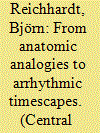

|
|
|
|
|
| Summary/Abstract |
This paper is concerned with the intertwinement of the timescapes of roads and rural life within the context of infrastructural development in northern Mongolia’s Khövsgöl region. With reference to ethnographic fieldwork, it explores how visions of incorporating roads into state development conflict with the landscapes and temporalities these very roads cross. By looking at infrastructural promise formulated in phrases such as ‘development follows the road’, this paper investigates what happens at the end of the road that connects Khatgal, a touristic village, with the provincial centre Mörön and the capital Ulaanbaatar. In this context, anatomic analogies are questioned as a leitmotif for road construction. In concert with the notion of timescapes, anatomic analogies offer a useful tool to critically analyse the spatial and temporal entanglements of infrastructural development in Mongolia.
|
|
|
|
|
|
|
|
|
|
|
|
|
|
|
|
| 2 |
ID:
185921


|
|
|
|
|
| Summary/Abstract |
This article challenges existing interpretations of Central Asia as a geographical entity. Adopting a history of technology approach to defining and analytically ‘constructing’ Central Asia as a region, it scrutinizes the ways the region has been materially created over the years through four types of large technical systems (infrastructures): waterways, railways, electricity grids and natural gas pipelines. This process, which is traced over a period of 150 years, can be thought of as Central Asia’s ‘hidden integration’ (and ‘hidden fragmentation’). The article maps the processes through which different parts of the region have become technically interlinked through the four systems, and Central Asia’s resulting ‘network geography’. It also studies the historical tensions, as they evolved over time, between ‘system-builders’ and ‘border-builders’.
|
|
|
|
|
|
|
|
|
|
|
|
|
|
|
|
| 3 |
ID:
185928


|
|
|
|
|
| Summary/Abstract |
This study examines the role of technologies and infrastructures within the realm of religion, which so far has received little attention within infrastructural approaches in anthropology. Introducing the notion of ʻreligious infrastructure', the analysis sheds light on the socio-material processes contributing to the spread of a specific understanding of religious knowledge ilim in present-day Kyrgyzstan, and how these shape Muslim selfhood and Muslim sociality. In addition, the article illustrates how this infrastructure transforms and reconfigures under specific historical as well as technological circumstances. This temporal embeddedness is furthermore demonstrated by the moral imaginaries elicited via religious infrastructure, which may be taken as representative of how interlocutors during the research connect their everyday lives to past and future visions of leading meaningful lives.
|
|
|
|
|
|
|
|
|
|
|
|
|
|
|
|
| 4 |
ID:
185927
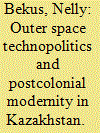

|
|
|
|
|
| Summary/Abstract |
This article examines the role of outer space technopolitics in post-Soviet Kazakhstan. It explores how outer space, the technological artefact of global relevance, works as a postcolonial fetish of modernity that is called upon to produce what it represents, that is, the reality of a technologically advanced Kazakh nation. The article shows that in its project of becoming a spacefaring nation the country reiterates major incentives that have motivated nuclear and space programme development in the postcolonial context of the Global South. It explores how collaboration with Russia allows Kazakhstan to claim its share in the Soviet space legacy rather than to distance itself from it. The study then traces the rise of a new internationalism in the Kazakhstani space programme outside the post-Soviet context. The article contributes to the debate on postcolonial technopolitics and shows how outer space has been used to enhance the conventional domain of postcolonial national ideologies – nativism and tradition – with technology and science. Finally, it depicts how the growing resistance to the space programme among Kazakh civil society groups reveals a close association of the environmental agenda with an ‘eco-nationalism’ permeated by a profoundly anti-imperial and, ultimately, anti-authoritarian political discourse.
|
|
|
|
|
|
|
|
|
|
|
|
|
|
|
|
| 5 |
ID:
185926
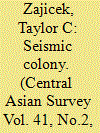

|
|
|
|
|
| Summary/Abstract |
For much of Russia’s fractious history, the earth’s stability at least could be taken for granted. The imperial heartland was situated deep on the Eurasian tectonic plate, rarely experiencing fatal seismic activity. As the empire expanded, however, it acquired several of Eurasia’s most earthquake-prone regions. This interplay between colonization and seismic landscapes produced a novel entity: the ‘seismic colony’. With its occasional earthquakes and perpetual risks, the seismic colony posed a significant challenge to Russian rule, particularly in Turkestan. Earthquakes devastated infrastructure, gave lie to the civilizing mission and fostered social disorder, thereby undercutting the technologies of rule that the empire relied on to exploit the region. Engaging analytical tools from the history of environment and technology, this article details this threat and the developments it prompted from Russian experts and settlers, including first-response efforts, reconfigured construction practices, and the concretization of seismology as a science and infrastructure.
|
|
|
|
|
|
|
|
|
|
|
|
|
|
|
|
| 6 |
ID:
185925


|
|
|
|
|
| Summary/Abstract |
This paper traces the changes and continuities in the cityscape of Soviet Samarkand following the launch of the mass housing campaign under Nikita Khrushchev. It examines the planning, building, appropriation, and renovation of public and private housing on the level of practices rather than policies and discourses. The paper relates these practices to the specific temporalities of Samarkand’s landscape, such as the life cycles of inhabitants, the change of seasons, or the timelines of material decay, among others. It shows that self-help building often proved to be more effective than state projects in addressing these temporalities. Drawing on site-specific cultural, material, and technical repertoires, self-help building was more than a pragmatic reaction to the housing shortage. It sustained the traditional Central Asian neighbourhood that Soviet planners hoped to banish from the urban landscape and was key to the expansion and diversification, rather than homogenization, of the ‘Soviet’ cityscape.
|
|
|
|
|
|
|
|
|
|
|
|
|
|
|
|
| 7 |
ID:
185920
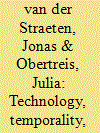

|
|
|
|
|
| Summary/Abstract |
This issue is dedicated to the question of how research on technology and its inherent temporality and materiality can enhance our understanding of geography, culture and history in Central Asia. The articles provide fresh ideas on Central Asia as a region by unpacking the “hard” infrastructural base of its cultural, social, and economic geography. They offer a more inclusive view on Central Asian landscapes, focusing on permanent material structures and vernacular practices that are often overlooked in conventional historiography and social studies research. Finally, they explore how research on technology both supports and challenges the primacy of political history in defining the historical periods and legacies of Central Asia. The papers cover about 150 years of history, with case studies on what are today Kazakhstan, Uzbekistan, Tajikistan, and Mongolia. This introductory essay summarizes their key insights, situating them in a wider debate on technology in and beyond Central Asia.
|
|
|
|
|
|
|
|
|
|
|
|
|
|
|
|
| 8 |
ID:
185922
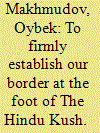

|
|
|
|
|
| Summary/Abstract |
Expansion has been a trait typical of many empires. As they occupied new territories, empires needed to exert control over them, and for this they needed roads. New roads also served to indirectly legitimize imperial rule over subjugated lands, in the eyes of both the local population and other, competing colonial powers. The Russian Empire was no exception, especially in such remote, mountainous regions as Pamir. As soon as Russian rule had been established, the Russian authorities faced the challenge here of ‘developing’ the road network. Roadbuilding, initiated by the Russians, brought the technological advances of the West to the peoples living in the Pamir Mountains, and accelerated their integration with the rest of the empire, whilst simultaneously legitimizing Russian rule at a local level. Traditional, local trails and Russian-built roads merged into a single network, an imperial mix of communication lines that allowed the Russians to successfully control Pamir.
|
|
|
|
|
|
|
|
|
|
|
|
|
|
|
|
| 9 |
ID:
185923
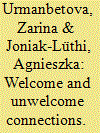

|
|
|
|
|
| Summary/Abstract |
In this article we discuss how infrastructural connections – here the ‘northbound’ and ‘southbound’ sections of a transregional road crossing the mountainous district of Toghuz-Toro in central Kyrgyzstan – become sites where identities can be either confirmed or contested. Linking this district with places that figure prominently in the symbolic geography of Kyrgyzstan, which divides the country into North and South, the two sections of road are inherently enmeshed in regional identity politics. Further, the article considers how the inhabitants of Toghuz-Toro take care of their own mobility and preserve desired connections in a harsh terrain, in the absence of state-managed public transport, and in a situation that sees only rudimentary road maintenance. It shows that technologies such as mobile Internet, and social media such as Facebook, have engendered a profound transformation in the use of transport infrastructure, breathing new life into journeys along the old, dilapidated post-Soviet roads.
|
|
|
|
|
|
|
|
|
|
|
|
|
|
|
|
|
|
|
|
|